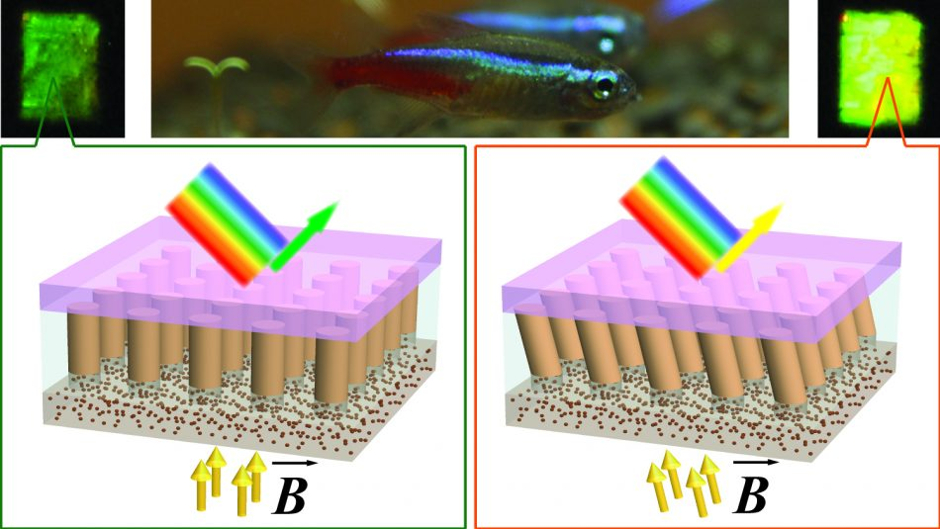Iridescent tetra fish inspire material for new displays and camouflage

A project part-supported by DARPA could see the introduction of dynamic camouflage that has been inspired by the flashing colours of the neon tetra fish.

The team at North Carolina State University (NC State) can change the colour of a material by manipulating the orientation of nanostructured columns in the material.
“Neon tetras can control their brightly coloured stripes by changing the angle of tiny platelets in their skin,” said Chih-Hao Chang, an associate professor of mechanical and aerospace engineering at North Carolina State University (NC State) and corresponding author of a paper on the work.
“For this proof-of-concept study, we’ve created a material that demonstrates a similar ability,” said Zhiren Luo, a PhD student at NC State and first author of the paper. “Specifically, we’ve shown that we can shift the material’s colour by using a magnetic field to change the orientation of an array of nanocolumns.”
Register now to continue reading
Thanks for visiting The Engineer. You’ve now reached your monthly limit of news stories. Register for free to unlock unlimited access to all of our news coverage, as well as premium content including opinion, in-depth features and special reports.
Benefits of registering
-
In-depth insights and coverage of key emerging trends
-
Unrestricted access to special reports throughout the year
-
Daily technology news delivered straight to your inbox










Water Sector Talent Exodus Could Cripple The Sector
Maybe if things are essential for the running of a country and we want to pay a fair price we should be running these utilities on a not for profit...